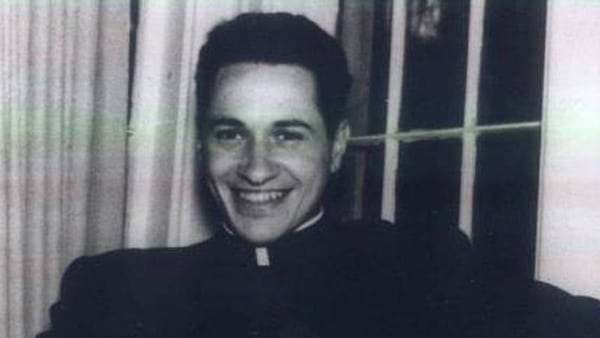
He was born in Bogota on February 3, 1929, into a privileged family of Bogotá belonging to the Colombian elites. After a brief semester in which he tried to study law at the national university, he withdrew to become a Catholic priest, thanks to the influence of some Dominican priests he met through his girlfriend’s father. His interest in social causes led him to be ordained a priest in 1954. A year later, Camilo traveled to Belgium and studied sociology at the Catholic University of Louvain, graduating in 1958.
Upon returning to Colombia, he decided to become involved with the causes of the poor, assuming a basic commitment: love for his neighbor.
Liberation theology and sociology
This position led him to be a pioneer of liberation theology, from which he proposed to unite Marxism with Christianity.
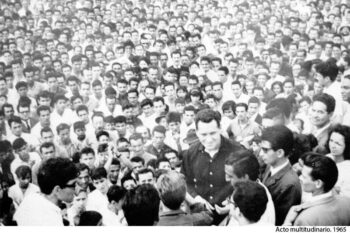
Camilo Torres at a crowded event
His knowledge in sociology led him to elaborate several studies and writings in which he made significant contributions to the social sciences.
However, Camilo Torres preferred not to remain only in theory. Unlike others, he decided to take action, joining in the development of various social experiences.
Together with Orlando Fals Borda, Eduardo Umaña Luna, María Cristina Salazar, Virginia Gutiérrez de Pineda, Carlos Escalante, Darío Botero Uribe, and Tomás Ducay, among others, he helped found the first Faculty of Sociology in Latin America, at the National University of Colombia. He also served as professor and chaplain of the institution.
His beginnings in the struggles
His commitment to popular causes increased more and more. He was a member and founder of the Movimiento Universitario de Promoción Comunal (MUNIPROC), was part of the technical committee of the agrarian reform of the Instituto Colombiano de la Reforma Agraria (INCORA), and chaired the first national congress of sociology, among others.
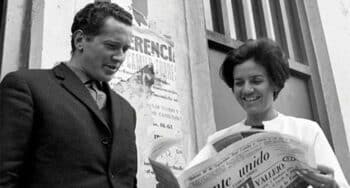
On June 24, 1965, with tears in his eyes, he celebrated his last mass in the church of San Diego in Bogota. The pressures of the conservative Colombian Catholic Church clashed with Camilo’s vision, who pointed out that true Christians should join the revolutionary struggle.
Camilo, the revolutionary
After founding the United Front in 1965, Camilo radicalized his position and decided to create a political movement that would seek the unity of all popular, revolutionary, democratic and abstentionist expressions for the struggle for real and deep transformations in society.
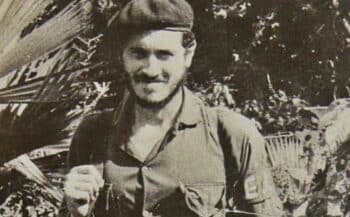
His strong links with popular and revolutionary struggles, his charisma and leadership skills, as well as his links with the ELN became evident to government security forces.
The guerrilla priest
According to writer Walter J. Broderick, author of the book Camilo Vive, Camilo Torres’ life was at risk and fears were growing that he would be assassinated by government forces.
The obvious fear of assassination forced Camilo Torres to join the ELN and travel to the jungles of Santander in October 1965.
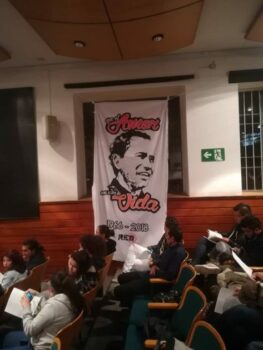
How Camilo Torres became a legend
A month later, on February 15, 1966, the country was shaken by the news of the assassination of Camilo Torres, who died at the age of 37 when he was wounded in combat while trying to recover a soldier’s rifle. After Camilo’s death, the legend began.
He became a symbol of social and popular struggles. Several schools and neighborhoods are named after him, and he inspired several women and men to join the liberation theology and revolutionary struggles in Colombia and Latin America.
After his death, General Alvaro Valencia Tovar, who led the group of soldiers who killed Camilo Torres, hid his body and buried it in an unknown place. Despite requests from his family, friends, and above all social movements, his body still remains in an unknown location.
On February 15, 2016, on the 50th anniversary of his death, a large group of people held a Eucharist in Patio Cemento, San Vicente de Chucuri in the department of Santander, the site where the legendary guerrilla priest fell in combat, to commemorate his life, his contributions to the social struggle, the validity of his thought and to demand that the government return his remains.
This article was translated from an article originally published in Spanish on Colombia Informa.

